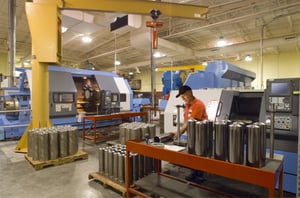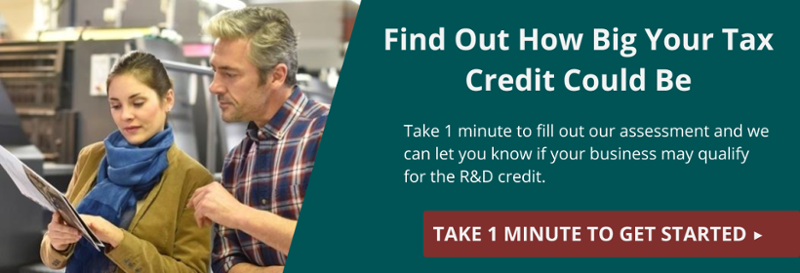 You may think you can only qualify for R&D tax credits if you create a new product design. But this is one time when it pays to be wrong.
You may think you can only qualify for R&D tax credits if you create a new product design. But this is one time when it pays to be wrong.
In fact, there are many aspects of your manufacturing operation that can count towards the tax credit requirements. Process optimization, manufacturing process improvements, improving existing products, and other activities can all qualify. By taking a holistic look at your processes and procedures, you could find even more ways to take advantage of valuable R&D tax credits.
Qualifying Activities
The first step to earning R&D tax credits is to think beyond new product design. To get you started, here are just a few examples of activities that could qualify for R&D tax credits:
- Custom production set-up processes
- Proof of concept procedures
- Trial production run activities
- Quality approval activities
- Custom packaging design
- Optimizing your manufacturing processes
- Adding equipment to your manufacturing facilities
- Developing new software
- Environmental testing
- Contract research expenses
This is not an exhaustive list of qualifying activities, but it should help guide your thinking on what would meet the tax credit requirements. To truly gauge whether an activity would qualify, you need to use the Four-Part Test.
The Four-Part Test
The Four-Part Test is the simplest way to determine if an activity meets the standards required to earn an R&D tax credit. Below are the four test criteria and what they mean for your manufacturing operation:
- Permitted Purpose - Meeting this requirement means an activity is intended to improve a product or process for better function, performance, reliability, quality, or cost efficiency.
- Technical Uncertainty - Meeting this requirement means an activity is intended to eliminate technical uncertainty related to methodology, design, techniques, formulas or inventions.
- Process of Experimentation - Meeting this requirement means an activity involves a process of experimentation to eliminate or resolve technical uncertainty. During the process, various alternatives are evaluated via modeling, simulation, trial and error, prototyping, or other methods.
- Technological in Nature - Meeting this requirement means an activity must rely on the hard sciences (engineering, physics, biology, chemistry, and computer science).
Regardless of the type of activity you're undertaking, if it passes the Four-Part Test, it will likely qualify for R&D tax credits. And remember, the end result of your activity doesn't necessarily have to be successful to qualify. So, keep an open mind about what might meet the tax credit standards.
Think Big
Designing new products for yourself or on behalf of your customers is great. In addition, there are many other ways to earn R&D tax credits that will help spur the growth you're looking for.
To truly take advantage of all the R&D tax credits you're entitled to, look at the big picture and consider all the activities involved in your manufacturing processes. From your initial design and proof of concept stages, all the way to packaging design and supply expenses, there is a litany of activities that may qualify for tax credits.
By understanding what may qualify and then using the Four-Part Test to see if the activity in question meets the required criteria, you can earn valuable R&D tax credits to help your business be more competitive, grow faster and be more profitable.






